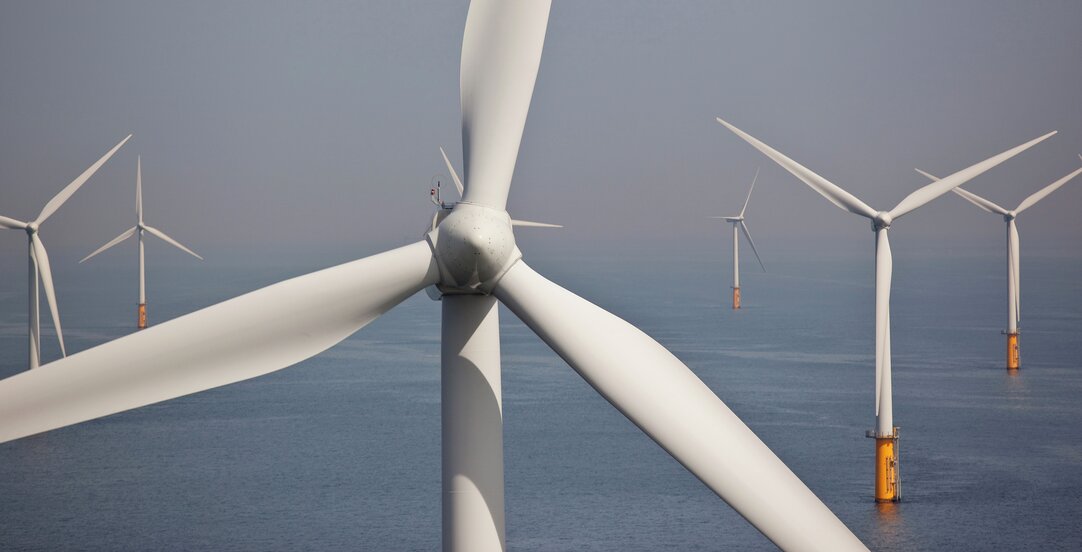Public consultation on offshore wind power in Norway

In July 2019, the Norwegian Ministry of Petroleum and Energy (the “Ministry”) presented a proposal to open up certain areas offshore Norway for the development and construction of offshore wind farms. In this article we will provide an overview of certain characteristics of those areas as well as the proposed new regulations related to offshore renewable energy production.
Reading time 5 minutes
As of today, it is only possible to apply for a license to build pilot wind power projects offshore Norway. In case the Ministry decides to open one or more of the proposed areas, developers may for the first time submit applications for full-scale offshore wind power projects.
The proposed areas
In July 2019, the Ministry proposed opening up two areas (Utsira Nord and Sandskallen-Sørøya Nord) for the licensing, development and construction of offshore wind farms. The Ministry also requested stakeholder input on support for and the viability of opening up a third area, Sørlige Nordsjø II.
- Utsira Nord: Utsira Nord is located west of Haugalandet, on the west coast of Norway. Utsira Nord is close to land and wind conditions are considered good. Due to an average water depth of 267 meters however, the area is only suitable for floating wind turbines. Based on total utilisation of 6-9% of the proposed Utsira Nord development area, estimated power production is in the region of 500-1500 MW.
- Sandskallen-Sørøya Nord: Sandskallen-Sørøya Nord lies in the Barents Sea in the far North of Norway, also located fairly close to land. With an average water depth of 89 meters and due to extensive variety in depth, the area would be suitable for both floating and sea-bed-fixed wind turbines. Based on total utilisation of 5-15% of the proposed Sandskallen-Sørøya Nord development area, estimated power production is in the region of 100-300 MW.
- Sørlige Nordsjø II: Sørlige Nordsjø II is located in the North Sea off the Southern coast of Norway, almost on the border of Danish territorial waters. The average water depth here is 60 meters, and the area is therefore primarily suitable for sea-bed-fixed wind turbines. Based on total utilisation of 6-10% of the proposed Sørlige Nordsjø II development area, estimated power production is in the region of 1000-2000 MW. An added advantage of the Sørlige Nordsjø II development area is its proximity to North Western Europe, making it especially suitable for exporting produced power to the European continent.
New regulations supplementing the Norwegian Offshore Energy Act
In connection with the potential development of the afore-mentioned areas, the Ministry also presented a proposal for further regulation of the license application process related to offshore renewable energy production, supplementing the existing provisions in the Norwegian Offshore Energy Act 2010 (the Offshore Energy Act). Below we present an overview of the main content of the proposed new regulation.
- Expansion of the jurisdiction of the Offshore Energy Act: As of today the Offshore Energy Act only applies to the ocean area outside the baselines (Norw. grunnlinjene). Although all the areas which are proposed to be opened up in this round are outside the baseline, areas inside the baseline may be opened in the future. For a more holistic development of offshore electricity production, the Ministry proposes that parts of the Offshore Energy Act shall apply inside the baselines. As a consequence, ocean areas inside the baseline will also need to be formally opened for license applications before it is possible to apply for development of offshore power projects.
- Regulation of the procedures for the license application process: The proposed new regulations stipulate new and detailed procedures regarding the license application process for offshore power installations, which to a large extent are similar to the application procedures for onshore power installations. The proposed new regulations prescribe the following procedure for any proposed projects:
- The project developer shall submit a notice to the Ministry, containing a draft program for consequence analysis. The program shall contain a description of the project, the methods to be used in the analysis and the project developer’s business. The draft program will be presented for public consultations. If the program is approved by the Ministry no other project developer may submit notice about a project in the same geographical area.
- The project developer shall apply for a license within two years after the program for consequence analysis was approved. The license application will also be presented for public consultations. A license may be granted with a validity of up to 30 years and may be prolonged upon application from the license holder.
- After obtaining a license, the project developer shall apply for approval of a detailed plan to The Norwegian Water Resources and Energy Directorate (“NVE”) within two years after the license was granted. The detailed plan shall contain detailed information about the project, planned construction start and completion, technical information, financing, and any changes to the documentation submitted in connection with the license application.
- The wind farm must then be constructed and put into commercial operation within three years after the detailed plan was approved by NVE.
- Processing fee: Pursuant to the proposal, the NVE will charge a processing fee of NOK 100,000 (approximately GBP 10,000) for processing the notice described in step 1 above.
- Simplified procedures for pilot projects: According to the proposed regulation, the procedure described above shall not however be fully applied to pilot projects. When applying for a pilot project it will not be necessary to send a notice with a draft program for consequence analysis, and it is possible to apply for a pilot permit outside areas formally opened for offshore energy production.
- Transmission cables directly out of the country: The proposed regulation will not affect the rules under the Energy Act regarding cables for transfer of power directly out of the country.
The public hearing ended on 1 November 2019. Once the Ministry has had time to analyse the various responses, it will then present a final proposal for royal decree about opening areas for license applications and a final proposal for regulations.
Wikborg Rein follows both the onshore and offshore wind industry closely, and we continuously host seminars for existing and potential clients and collaborators on this matter. An overview of upcoming events can be found here. We also invite all interested parties to contact us to discuss developments in the wind power industry and to see how we may be able to assist.
